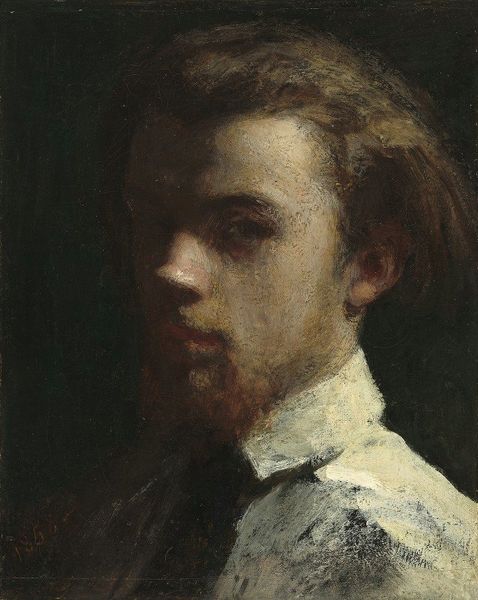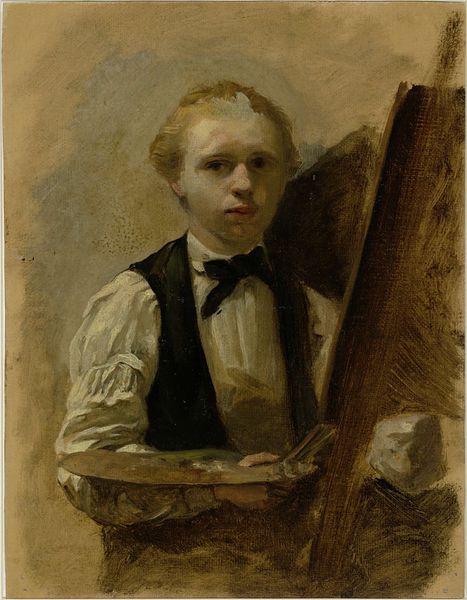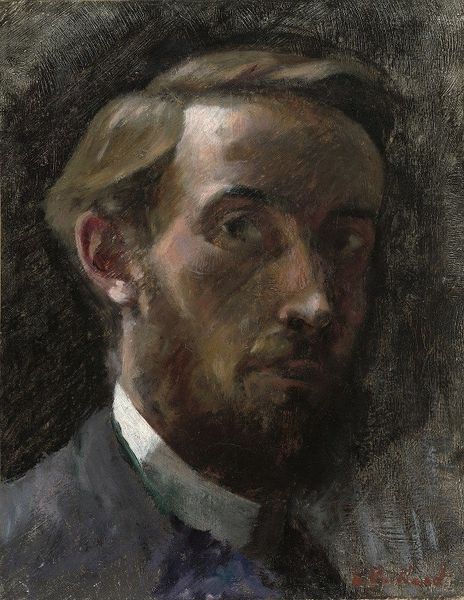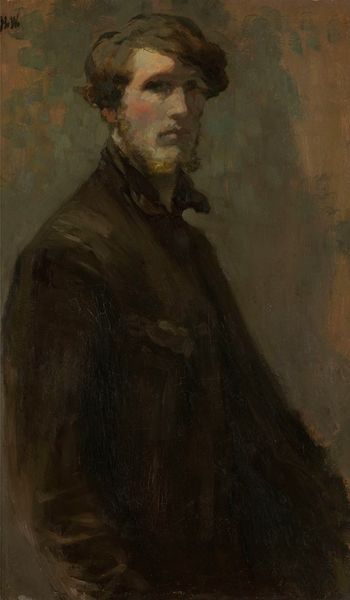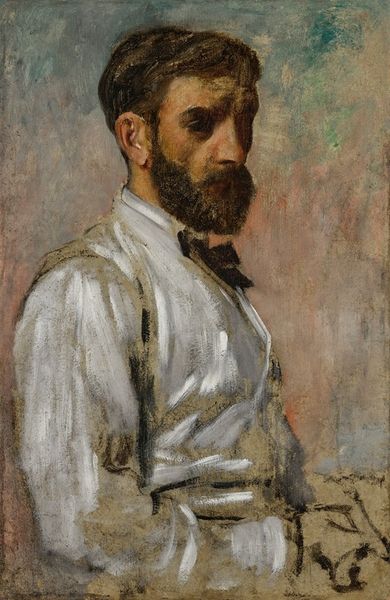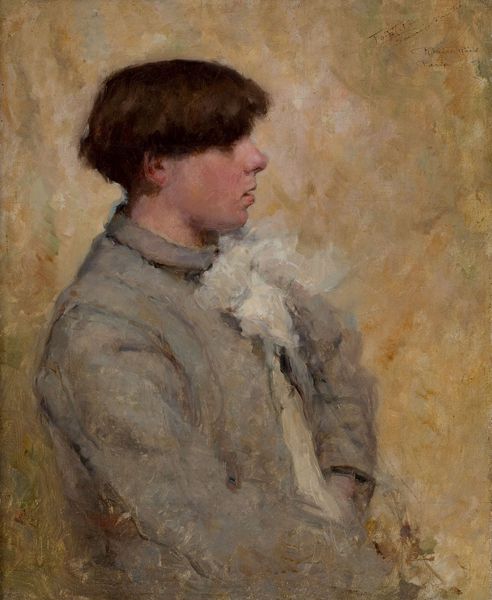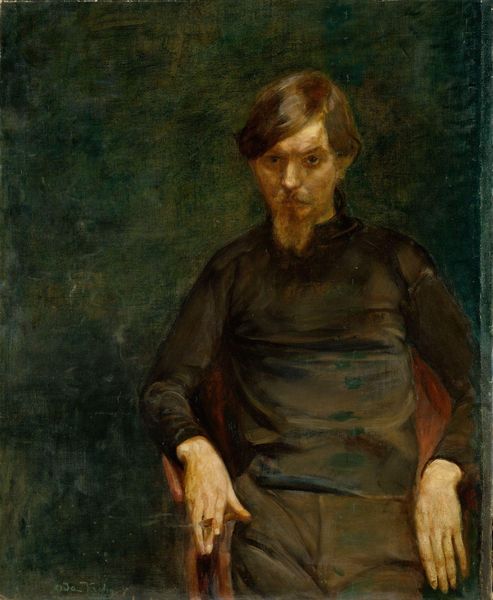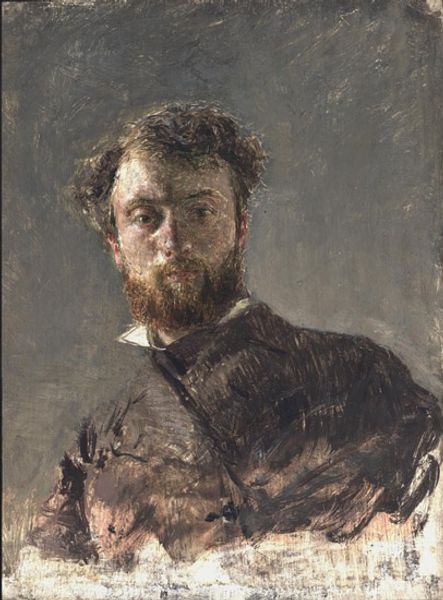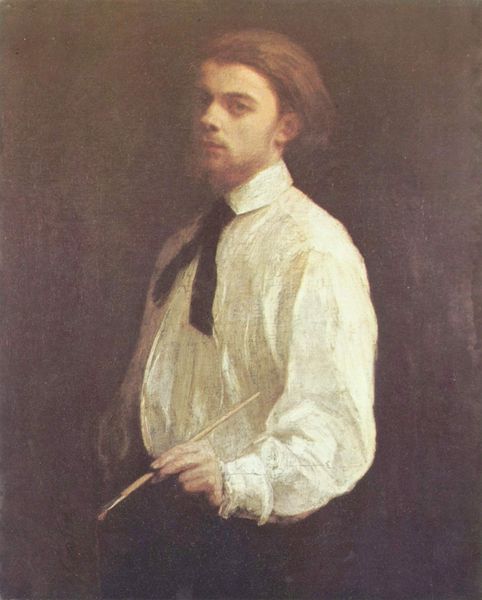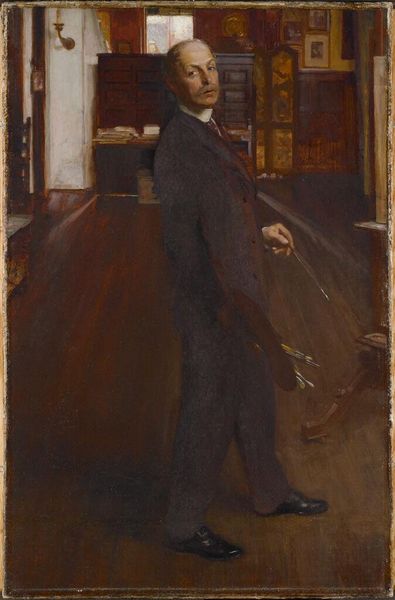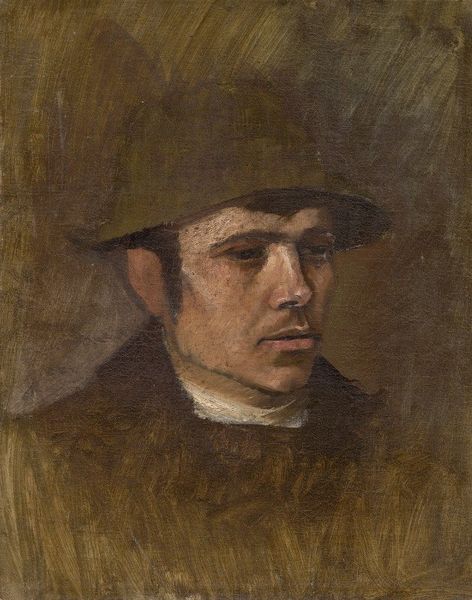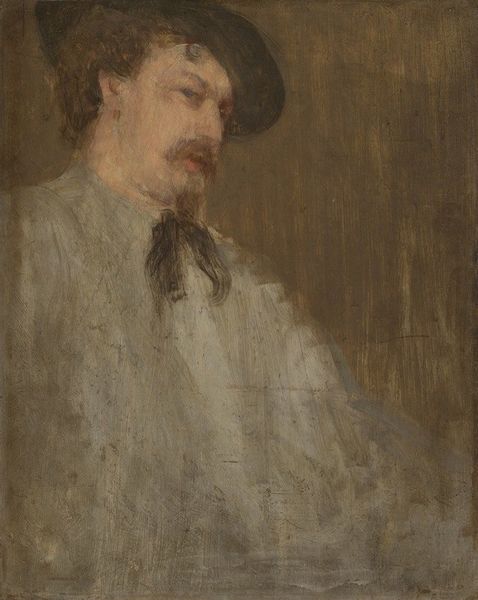
Copyright: Public Domain: Artvee
Henri Fantin-Latour painted this self-portrait in France, likely during the 1860s, using oil on canvas. The image presents a young man, holding a painting palette. His dark clothing contrasts with the white shirt and collar, signaling his profession as an artist, but also referencing a wider shift in social norms taking place in France. The rise of bohemianism in Paris at this time meant that artists increasingly saw themselves as outsiders, as radicals who rejected bourgeois convention. As art institutions became more formalized through the establishment of state-sponsored academies and museums, it was common for artists to either try to exhibit at these official venues, or reject them completely in favor of alternative spaces. To understand the art of this period, research into exhibition histories and artists’ correspondence can be very helpful. Art always exists within specific historical conditions, as well as in relation to institutions and social norms.
Comments
No comments
Be the first to comment and join the conversation on the ultimate creative platform.
